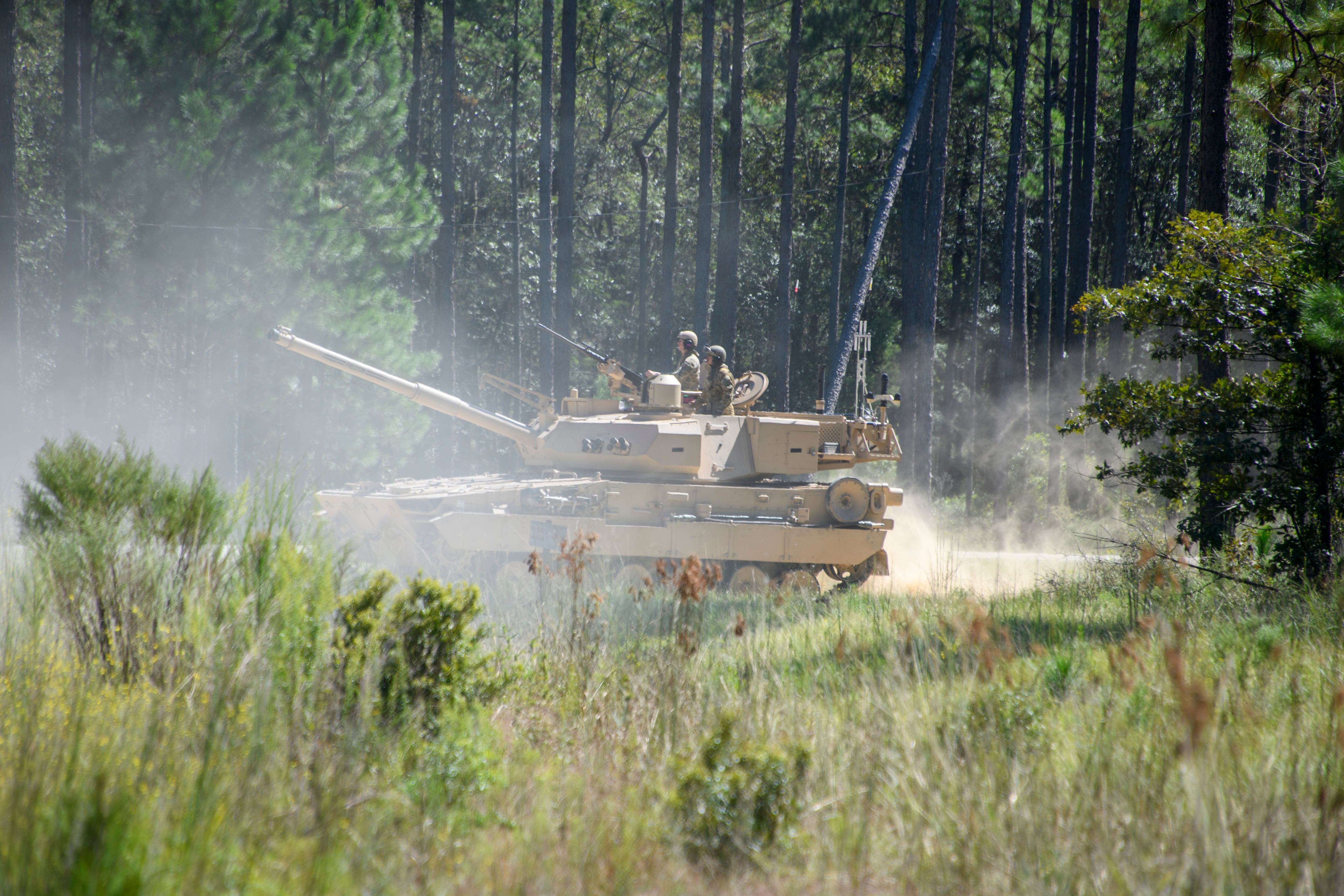WASHINGTON — The U.S. Army has named its first new combat vehicle in nearly four decades the M10 Booker after two soldiers killed in action, one in the Iraq War and the other in World War II.
Staff Sgt. Stevon A. Booker was killed April 5, 2003, during the so-called thunder run in Baghdad, Iraq. Pvt. Robert D. Booker was killed under heavy machine gunfire in Tunisia on April 9, 1943, during WWII.
Stevon Booker was a tanker and Robert Booker was in the infantry. Robert was posthumously awarded the Medal of Honor, and Stevon was awarded the Distinguished Service Cross.
The M10, now formerly known as the Mobile Protected Firepower vehicle, is the first combat vehicle named after someone who served in post-9/11 combat.
The stories of the two soldiers “articulate the Army’s exact needs for the M10 Booker combat vehicle,” service acquisition chief Doug Bush said June 8. “Our soldiers will now have an infantry assault vehicle that brings a new level of lethality to our ground forces and allows our men and women in uniform to move at a faster pace under greater protection.”
Stevon, a tank commander serving under Task Force 1-64 company commander Capt. Andrew Hilmes, was killed by enemy machine gun fire during the first thunder run up Highway 8 leading to the Baghdad International airport.
When both of the tank’s machine guns failed, Stevon laid down on top of the tank’s turret and fired at enemy forces with his own weapon, destroying an enemy troop carrier as it attempted to pass the tank. He continued to fire his weapon along an 8-kilometer route until he was mortally wounded.
Robert was killed as he advanced through mortar and artillery fire with a machine gun, suppressing fire and destroying other machine gun positions before he was fatally wounded, Maj. Gen. Glenn Dean, the service’s program executive officer for Ground Combat Systems, said on June 8.
“That is the mission that the M10 Booker is designed to fulfill on behalf of and in support of the infantry,” Dean said. “So having an armored and infantry is a particularly compelling name.”
While it might seem unusual to name the vehicle after two people, Dean noted, the Stryker combat vehicle was named for two soldiers — both Medal of Honor recipients — serving in the Vietnam War and WWII.
The vehicle
The M10 Booker is “an armored vehicle that is intended to support our infantry brigade combat teams by suppressing and destroying fortifications, gun systems, entrenchments and secondarily then providing protection against enemy armored vehicles,” Dean added.
General Dynamics Land Systems, which won the competition to provide the M10 to the Army in June 2022, will deliver the first of the vehicles in November this year.
The system features a new chassis design, while drawing from other GDLS programs to reduce risk, Kevin Vernagus, company program director for the Mobile Protected Firepower system, told Defense News in October 2022.
The turret is also “largely new and with different materials than normal” he added, but “we still retain the interior look, feel and controls similar to an Abrams” main battle tank.

GDLS will initially deliver 26 vehicles, but the contract allows the Army to buy 70 more over the course of low-rate initial production for a total of $1.14 billion. At least eight of the 12 prototypes used during competitive evaluation will be retrofitted for fielding to the force.
The Army will create a new battalion for the first unit of M10s — 42 vehicles — by the fourth quarter of fiscal 2025, Dean said. The Army plans to enter full-rate production in calendar 2025.
Prior to fielding, the Army will perform initial operational tests for the vehicle in late 2024 or early 2025, Dean said.
The Army expects to spend about $6 billion on Mobile Protected Firepower vehicles through the procurement phase, including what it has already spent on research, development and prototyping efforts. The total life-cycle cost of the program, including sustainment, military construction and personnel, is estimated at $17 billion.
The Army plans to buy 504 vehicles, which are projected to be in the inventory for at least 30 years. The bulk of procurement should conclude by 2035, Dean has said. The procurement unit cost is estimated to be around $12.9 million, which includes spares, training and fielding.
To win the M10 contract over competitor BAE Systems, GDLS had to deliver 12 prototypes to the service for routine evaluation as well as to soldiers in the 82nd Airborne Division at Fort Bragg, North Carolina, now called Fort Liberty. The soldiers extensively assessed the operational qualities and characteristics of both offerings, then provided feedback to Army decision-makers.
The vehicle experienced issues in testing and evaluation, including toxic fumes generated when firing the main gun and overheating. Dean said both of those issues are resolved.
The company also improved sealing around hatches and enhanced armor coverage, GDLS told Defense News last year.
The M10 turrets will be manufactured at the Joint Systems Manufacturing Center in Lima, Ohio, where M1 Abrams tanks are made. The hulls will be made in Michigan, the gun tubes at Watervliet Arsenal, New York, and vehicle assembly in Anniston Army Depot, Alabama.
Jen Judson is an award-winning journalist covering land warfare for Defense News. She has also worked for Politico and Inside Defense. She holds a Master of Science degree in journalism from Boston University and a Bachelor of Arts degree from Kenyon College.




